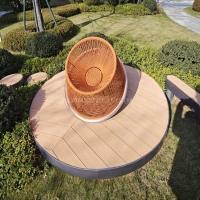Welcome to the website for landscape facilities products and knowledge.
How do manufacturers test landscape sofas for performance in extreme temperature conditions?
Manufacturers of landscape sofas employ rigorous testing methods to ensure their products withstand extreme temperature conditions, guaranteeing durability and comfort for outdoor use. These tests simulate harsh environments to evaluate material resilience, structural integrity, and overall performance.
One common method is thermal cycling, where sofas are repeatedly exposed to alternating high and low temperatures in climate-controlled chambers. This process mimics seasonal changes, testing how materials expand, contract, and degrade over time. For example, a sofa might endure cycles of -20°C to 50°C to replicate freezing winters and scorching summers.
UV exposure testing is another critical step. Specialized machines simulate prolonged sunlight exposure to assess fading, cracking, and weakening of fabrics and frames. High-quality landscape sofas often use UV-resistant materials, which are tested for hundreds or even thousands of hours under intense artificial sunlight.
Additionally, manufacturers conduct real-world field tests in diverse climates, from arid deserts to humid coastal regions. These tests provide practical insights into how sofas perform under natural weather fluctuations, including rain, snow, and extreme heat.
By combining laboratory simulations with real-world trials, manufacturers ensure landscape sofas meet high standards for weather resistance, longevity, and user comfort, making them reliable choices for outdoor spaces.
Related search:

Recommendation
Swivel chair-Specialty steel structure woven rattan leisure chair with rotatable design